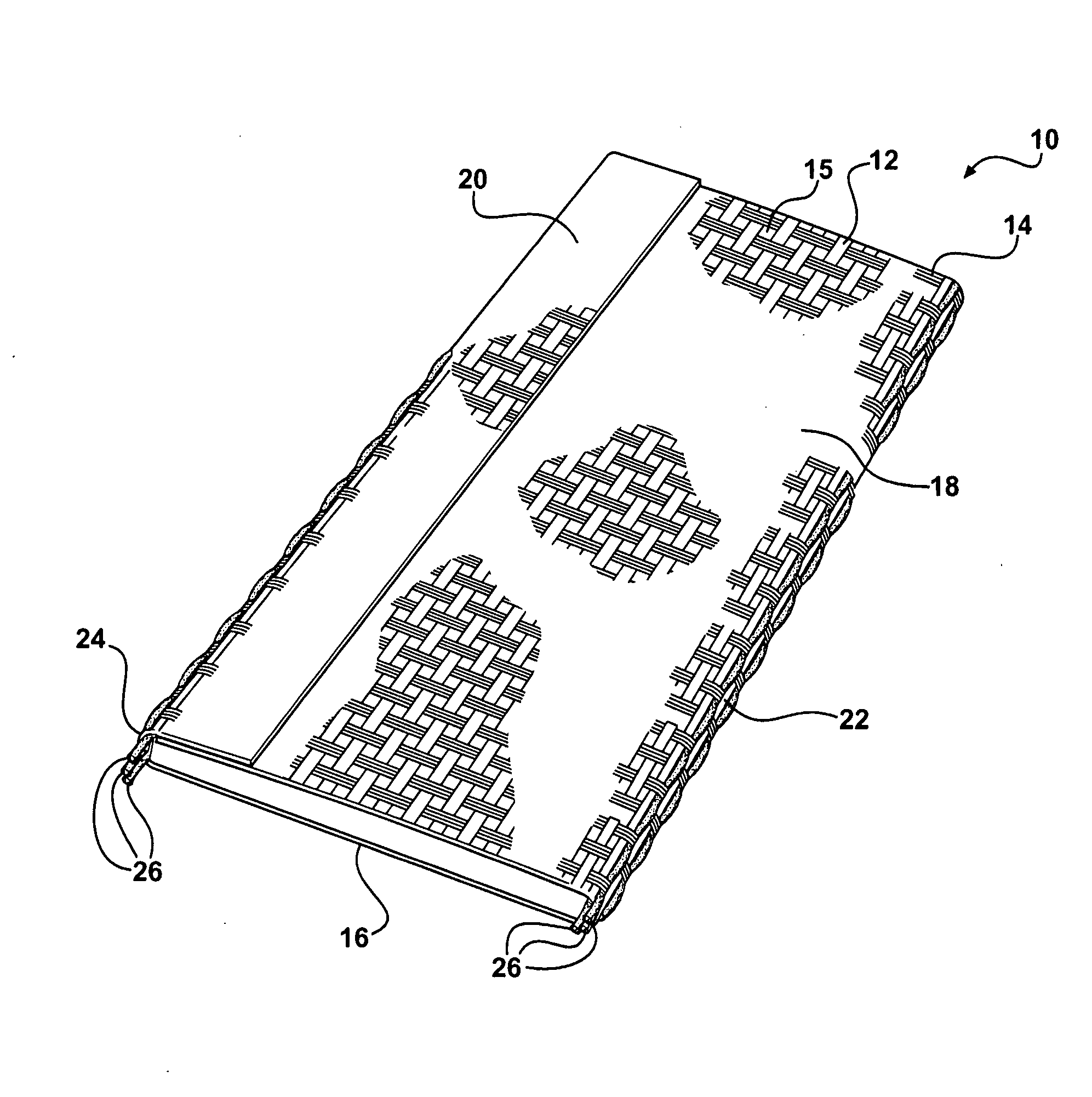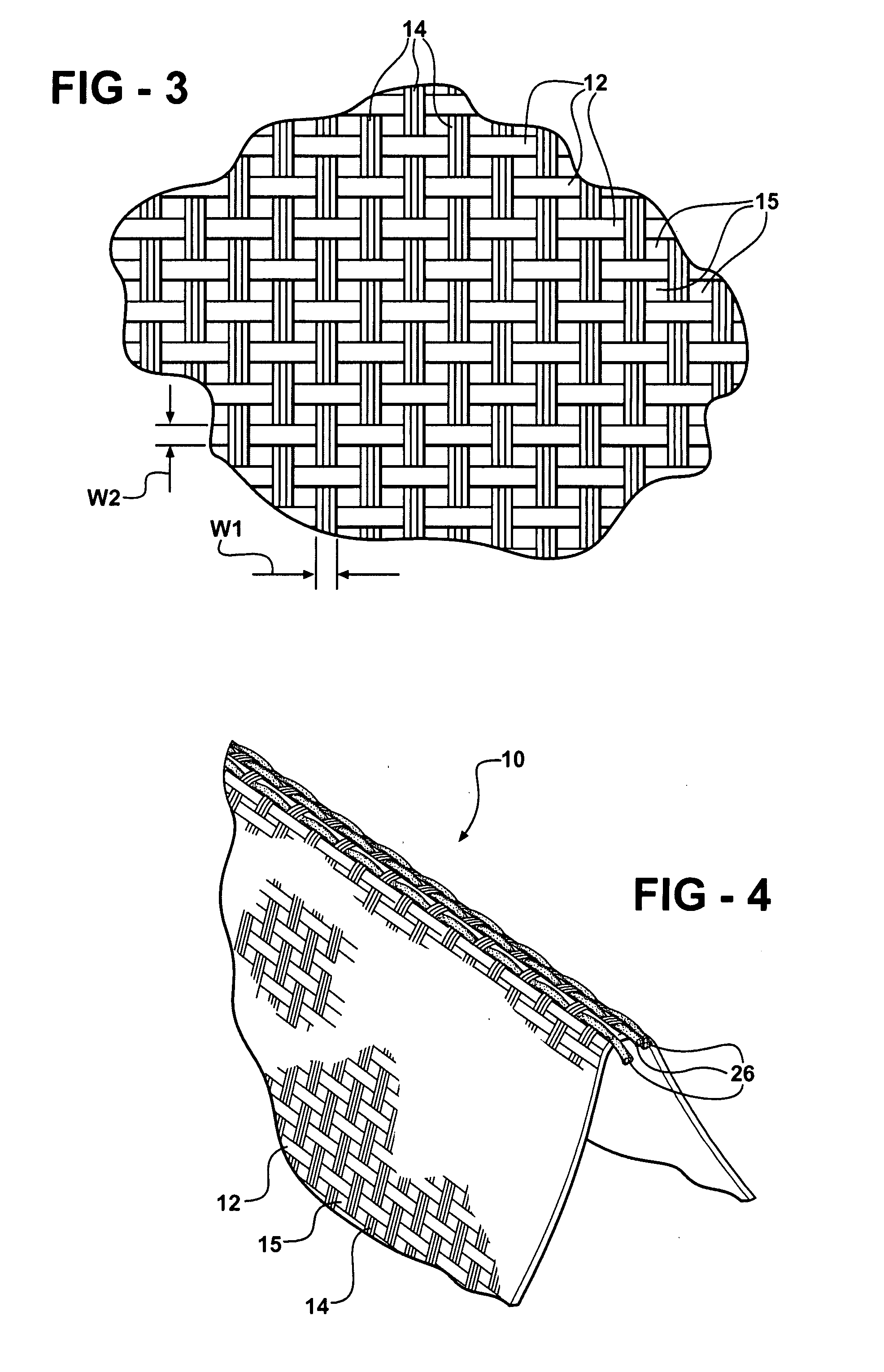Low profile textile wire bundler sleeve
a textile bundler and low profile technology, applied in the field of sleeves, can solve the problems of difficult routing, difficult to be easily routed, and large package size, and achieve the effect of low profile and lending strength and stiffness to the sleeves
- Summary
- Abstract
- Description
- Claims
- Application Information
AI Technical Summary
Benefits of technology
Problems solved by technology
Method used
Image
Examples
Embodiment Construction
[0029] Referring in more detail to the drawings, FIGS. 1-2 show a low profile protective textile sleeve for use in bundling a plurality of wires generally at 10. The sleeve 10 includes a plurality of longitudinally extending monofilament warp yarns 12 and a plurality of latitudinally extending weft or fill monofilament yarns 14. The yarns 12, 14 are intertwined with one another and heat-set to form a generally flat fold configuration of the sleeve 10. The intertwined yarns 12, 14 yield an open structure of the sleeve 10. The yarns 12, 14 may be intertwined through weaving, such as on a narrow fabric needle loom or broadloom, for example, or warp knitting (for example, Raschel or Crochet). The openings or interstices are identified at 15 in the drawings and provide open spaces through which moisture can pass so as to minimize any buildup of moisture against the wire bundle in the sleeve 10, while also lending to a reduced weight sleeve structure.
[0030] The sleeve 10 includes a base ...
PUM
| Property | Measurement | Unit |
|---|---|---|
| Length | aaaaa | aaaaa |
| Diameter | aaaaa | aaaaa |
| Width | aaaaa | aaaaa |
Abstract
Description
Claims
Application Information
 Login to View More
Login to View More - R&D
- Intellectual Property
- Life Sciences
- Materials
- Tech Scout
- Unparalleled Data Quality
- Higher Quality Content
- 60% Fewer Hallucinations
Browse by: Latest US Patents, China's latest patents, Technical Efficacy Thesaurus, Application Domain, Technology Topic, Popular Technical Reports.
© 2025 PatSnap. All rights reserved.Legal|Privacy policy|Modern Slavery Act Transparency Statement|Sitemap|About US| Contact US: help@patsnap.com



